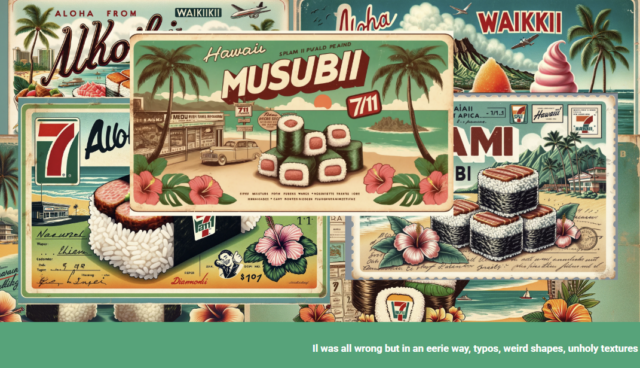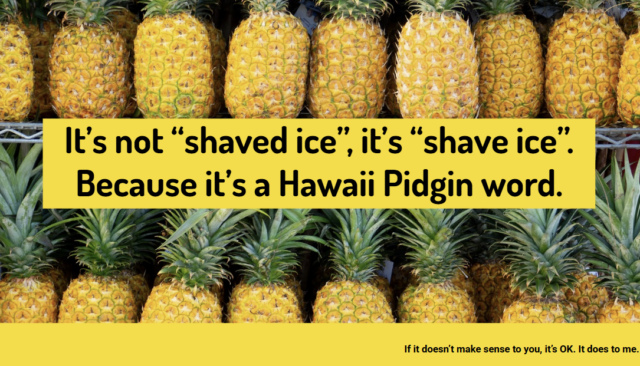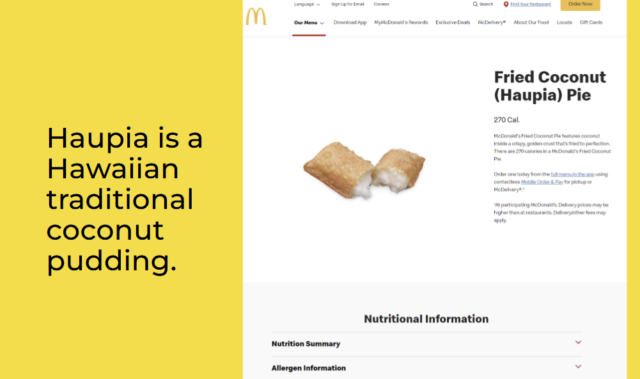Effective local SEO is a nuanced endeavor. I’m Myriam Jessier, and with over 15 years in search marketing, co-founding Neurospicy Agency and PRAGM, and a childhood spent in Hawai’i (pronounced Ha-VAI-ee – a place that taught me the importance of local intricacies, like correctly saying Liliʻuokalani), I’ve learned a crucial lesson: a one-size-fits-all approach to local marketing is ineffective.
You’ve likely heard this before, but is it truly embedded in your strategy? I have worked with many global brands over the years. A common disconnect brands suffer from is failing to tune into the “Familiarity Factor.”
Brands are an integral part of the social fabric of any community they operate in. They must act like it or risk being deemed untrustworthy by customers.
We’re Drawn to What We Know: Understanding ‘Familiarity Bias’
Cognitive science provides a valuable insight into why your local marketing efforts can feel tone-deaf: humans have a familiarity bias. This mental shortcut means we naturally gravitate towards what we know and find familiar because it feels inherently safer. When you tap into it, you’re not just aiming for clicks; you’re building cognitive trust and confidence. You are effectively guiding customers by demonstrating a genuine understanding of their context.
This is where true localization distinguishes itself from mere translation.
Translation alters words, but localization adapts your entire message to resonate with local culture, dialect, colloquialisms, and consumer behavior. It’s the difference between a generic approach and one that says, “I understand this specific community.” A nod to Giulia Panozzo, a neuroscientist turned marketer who breaks it down even further.
When Automation Misses the Mark: The Limits of AI in Localization
I have a wonderful anecdote regarding LLMs. ChatGPT helped me solve a decades-long search in one query.
I grew up surrounded by one side of my family speaking Hungarian and broken French, while the other spoke perfect French and fluent Yiddish. My father had many nicknames for us, and upon his passing, I could never figure out what one of them meant for my brother. How could I spell something that I’d never seen written?
Many years spent Googling didn’t help me.
And Yiddish speakers are so few and far between in my world now that I had no one left to ask. It turns out, and thanks to ChatGPT for this, that my brother’s nickname meant “little stick”, which was such a sweet and fitting description.

I literally had to speak it to get it found.

Except that such tools are not necessarily to be trusted blindly with localization. Their outputs can feel wildly off.
For instance, I once dedicated several hours attempting to guide an LLM in creating a vintage Hawaiian postcard, including some food staples from my childhood. The outcome was a collection of inaccuracies: typos, incongruous shapes, and what could only be described as “unholy textures.”
It was fundamentally wrong.
The reason? The machine lacks the lived experience and nuanced understanding that a human possesses.

Consider the “shaved ice” emoji 🍧. Emojipedia describes it as a “mound of shaved ice (snow cone) served in a dessert bowl… flavored with a cherry-red syrup… Associated with Hawaiian shave ice or Japanese kakigori.”
This is close, but misses a key local detail.
For those who truly know Hawai’i, it’s not called “shaved ice.” It’s “shave ice“—no ‘d’. This is a Hawai’i Pidgin term. Using “snow cone” or adding the ‘d’ instantly signals a lack of local familiarity. It’s a subtle distinction, but a potent one—a form of local shorthand. It clearly signals that you aren’t from there, that you are passing through as a tourist or a military person stationed on the island.
This isn’t linguistic pedantry, these nuances are foundational to genuine local connection.

Brand familiarity translates to increased cognitive trust and confidence in decision-making processes for customers. A great piece for further reading on this is: Familiarity and Its Impact on Consumer Decision Biases and Heuristics.
From Keywords to Connection: Weaving Familiarity into Your Local SEO
Your mission is to deliver localized experiences to users based on their geography and language preferences. How do we translate this understanding into practical local SEO? First and foremost, you should be able to point out a few examples of “not like us” in your own area. It’s about being both present and relevant.
True localization transcends language to tap into the psychological drivers behind decision-making.
1. Understand Local Behaviors and Preferences (I Call it the “Haupia Pie” Principle)

McDonald’s is a global brand, but they know that good old American apple pie is not the standard there. They offer Haupia Pie, a fried pie with a traditional Hawaiian coconut pudding filling.
McDonald’s understood that to be truly local, they needed to cater to the local palate.
This principle extends to items like “loco moco” (a popular local dish) or “furikake popcorn.” These are cultural touchstones that I seek out when I want comfort. They are something that you should know about if you are marketing to folks living in that beautiful state.
Are these appearing in your local keyword research? (Consider their search volumes: “loco moco burger” sees around 170 monthly searches, and “furikake popcorn” around 390.)
2. Be Locally Authentic
I grew up with Paprika and a healthy fear of Russia. It used to be a baseline for Hungarian parents and grandparents coming from Hungary. So you can imagine that a Samsung advertisement that translated an American video into Hungarian but retained the phrase “pardon my French” was very, very confusing for many of my peers.
What does France have to do with Samsung…and us? This was a misstep because the idiom doesn’t resonate in Hungary.
In fact, a Hungarian expression for telling someone to go away translates literally to “go to France.” The ad felt inauthentic and disconnected.
Even details like phone number formatting contribute. The US, Canada, France, Germany, and Italy each have distinct conventions for “chunking” phone numbers to aid memory. Adopting the local format is a subtle acknowledgment of familiarity. Consider idioms, formats,, and keywords to truly connect with your audience.
3. Integrate Local Customs, Imagery, and Traditions
When targeting a market like Hawai’i, consider Aloha wear. It’s not merely casual clothing; it can be formal attire. There’s matching Aloha wear, Aloha print dresses, and traditional (and formal) Hawaiian muumuu dresses.
These terms have search volume because they are integral to the local culture. Your imagery should also reflect this understanding, featuring local scenery, symbols, and people. You should be able to do this as a local marketer. Otherwise, something is wrong; you’re not truly embedded in the local culture and will be treated as an outsider.
That stock imagery you added to your Google Business Profile that you’d hoped was humanizing? It could be doing the complete opposite if you’re not careful. Make sure you’re actually marketing effectively to your truly local audience and use images that reflect that.
4. Acknowledge Local Market Realities (The “Poké” Example)
For many outside of Hawai’i, “poké” is often perceived as a trendy restaurant item, usually a poké bowl. For a Hawai’i resident, however, it’s frequently a supermarket delicacy—a special treat one might look for on sale at local stores like Times Supermarket or Foodland.
Consequently, a poké restaurant in Hawai’i competes not only with other restaurants but also with local supermarket deli counters. Your local SEO strategy must account for this. Tools like AlsoAsked can provide valuable insights here, revealing common user questions such as, “Does Times Supermarket have poke?” or “Does Costco have poke?”.
Time to Make it Your Own: Actionable Insights for Effective Localization
Brand familiarity can streamline user experiences, making interactions feel intuitive and trustworthy.
(If you’re ready for a real deep dive, read this report: Elucidating trust-building sources in social shopping: A consumer cognitive and emotional trust perspective).
If you haven’t got time for that, though, then the magic formula in a neat bullet point list is:
Familiarity + Marketing Means
- Understanding the locals’ behaviors and preferences
- Creating content that resonates locally
- Building trust and credibility
So what does that look like in practice?
- Shipping and Availability Transparency
For island communities or remote areas, a primary concern is often, “Do they ship here, and what are the costs?” Queries like “Does Wayfair ship to Hawaii?” are prevalent. Clear information is key.
- Localized Promotions and Discounts
In Hawai’i, the “Kama’āina” rate offers discounts to locals. Given the significant military presence, military discounts are also common. Recognizing and catering to these with specific landing pages or offers can build meaningful goodwill.
- Leverage Local Holidays and Events
Beyond mainstream holidays, are you aware of regional events? In Hawai’i, this includes Prince Kūhiō Day (March 26), Lei Day (May 1), and King Kamehameha I Day (June 11), as well as the Aloha Festivals or the Merrie Monarch Festival. These present opportunities for locally relevant content, promotions, and community engagement.
- Adhere to Legal and Geographic Nuances
Be aware of local regulations. For instance, Hawai’i has implemented its own data privacy laws. Compliance and awareness are crucial. - Optimize Microcopy
Your meta descriptions, image alt-text, and even button text are all opportunities to subtly incorporate local language and references. - Build Local Trust Signals
Seek reviews and testimonials from region-specific publications and influencers. An “upscale twist on the traditional Luau” review from a local Hawaiian magazine, for example, can carry more weight within that community than a generic endorsement. - Refine Internal Site Search
Ensure your internal search engine understands local terminology. If it doesn’t recognize that “manapua” is the local term for “char siu bao” or “pork buns,” or if it doesn’t account for regional variations in product names (e.g., “hair dryer” vs. “blow dryer”), you risk creating user friction.
Human Touch Breeds Familiarity in an Algorithmic World
Machine translation and AI offer scalability at a speed never before seen. Quality and speed are not synonymous though: crafting true resonance requires a multi-local approach—one driven by human understanding of subtle cultural nuances. It involves delving deeper than surface-level keywords to grasp the intent and context behind user searches.
Having lived and worked across diverse markets like the US, Canada, France, Germany, Portugal, Italy, and Denmark, I’ve consistently observed a fundamental factor: the deep-seated human need for familiarity. The goal is to move beyond simple translation and strive for genuine connection. Immerse your strategy in local customs, dialects, cultural references, imagery, and traditions. Aim to become that trusted local guide who understands the community’s unique perspectives. When you make your audience feel seen, understood, and comfortable, that’s when truly effective marketing occurs.
If you find yourself navigating a particularly complex local market, remember that these details matter. Paying attention to them is a cornerstone of successful local SEO.

